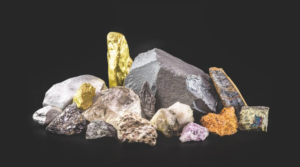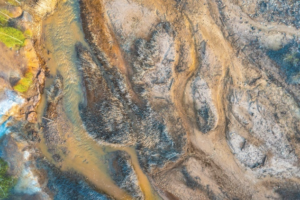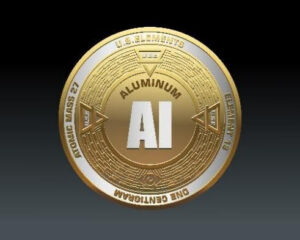At PTOE Corporation, we don’t just think outside the box—sometimes we vaporize the box in a plasma arc and extract the valuable elements from its ashes, but most of the time we make things so small and then figure out how to capture it. As a privately held pioneer in advanced technology for the concentration and separation of critical minerals, our mission is simple:
You see we were thinking about Making America Mineral Independent Again before it was front and center of the evening news. If unlocking hidden treasures in industrial waste and mined tailings sounds a little mad, good—it should. Disrupting an industry that has been stuck in the past for decades takes a level of scientific obsession that borders on insanity. And that’s exactly why I’m here.
The Road to Critical Mineral Independence
We didn’t start this journey expecting to become the “mad scientists” of mineral processing. But after a decade of diving headfirst into the black hole of metallurgy, we’ve come to a clear realization: we don’t have a resource problem—we have a processing problem. The U.S. is sitting on a virtually limitless supply of critical minerals trapped in mine tailings, industrial byproducts, and waste streams. Yet, we’re still dependent on foreign nations, especially China, because our extraction and refining technologies haven’t caught up to the challenge.
The good news? We can fix this—and much faster than people think.
Instead of waiting decades to permit new mines, we can start extracting critical minerals right now from materials that are already permitted or require minimal additional approvals. This approach doesn’t just secure our supply chains for defense, technology, and clean energy—it also positions the U.S. as a global leader in sustainable mineral recovery.
The Need for Next-Generation Extraction and Refining Technologies
Having spent years testing and re-engineering every known separation process, we can tell you firsthand: current methods are riddled with inefficiencies. If we’re going to compete with China at an industrial scale, it was clear to me that we needed disruptive advancements in extraction, separation, and refining. Let’s break it down:
1. Dry Concentration Technologies: The Waterless Revolution
Why It’s Important:
- Traditional wet processing is a water-hogging nightmare—unsustainable, expensive, and environmentally destructive.
- Slurry-based methods create massive tailings ponds, a long-term liability.
- High-energy grinding and flotation drive up operational costs.
Challenges & Needed Improvements:
- Dry separation techniques (electrostatic, magnetic, sensor-based sorting) often struggle with fine particles (<75 microns).
- Current systems have lower recovery rates than wet processing.
- Scaling these technologies for high-tonnage operations is a work in progress.
Where We’re Going:
- AI-driven sorting for more precise separation.
- Multi-stage dry processing to recover lower-grade materials.
- Hybrid approaches combining dry methods with low-fluid extraction.
2. Bioleaching and Bioremediation: Nature’s Extraction Crew
Why It’s Important:
- Microorganisms can selectively extract metals without the need for harsh chemicals.
- This process consumes significantly less energy than traditional refining.
- It has the potential to restore contaminated sites while recovering valuable minerals.
Challenges & Needed Improvements:
- Bioleaching is slow—we need to speed it up.
- Not all minerals are bioleachable, and the ones that are require specific microbes.
- Microbial activity is environmentally sensitive—pH, oxygen, and temperature all matter.
Where We’re Going:
- Genetically engineered microbes designed for high-efficiency leaching.
- Optimized bioreactors to accelerate the process.
- Hybrid bioleaching combined with other extraction techniques.
3. Ionic Liquid and Solvent Extraction: Chemistry Gets an Upgrade
Why It’s Important:
- Traditional solvent extraction is inefficient—ionic liquids offer a far more selective alternative.
- They can extract REEs, lithium, and cobalt from complex waste streams with minimal environmental impact.
Challenges & Needed Improvements:
- Ionic liquids are still too expensive for large-scale use.
- Some formulations are toxic or non-biodegradable.
- The industry hasn’t yet scaled this from lab experiments to industrial deployment.
Where We’re Going:
- Lower-cost, biodegradable ionic liquids.
- Advanced formulations to improve selectivity.
- Electrochemical integration for direct metal deposition.
4. Plasma and Hydrometallurgical Processing: The High-Tech Furnace
Why It’s Important:
- Plasma reactors can break down even the most stubborn mineral structures, liberating valuable elements.
- Hydrometallurgical techniques enable selective leaching of high-value metals.
- These processes can extract rare and dispersed elements that traditional methods miss.
Challenges & Needed Improvements:
- Plasma processing is energy-intensive, making it cost-prohibitive at scale.
- Hydrometallurgy relies on strong acids and bases, creating environmental risks.
- Current techniques lack precise control, leading to unrecoverable metal losses.
Where We’re Going:
- Low-energy plasma reactors to cut costs.
- Selective hydrometallurgical approaches to minimize waste.
- Closed-loop systems for recycling chemicals and reducing waste.
Why This Matters Now
Every day we delay, China strengthens its grip on global supply chains. We have a massive opportunity to turn our waste into wealth—if we act fast and push technological boundaries.
At PTOE Corporation, we’re not waiting. We’re scaling up, building next-generation processing facilities, and proving that critical mineral independence is within reach.
The U.S. doesn’t need to mine more—we need to process smarter. That’s the future, and if you ask me, the future is already here.
Final Thought: A Call to Action
If you’re a scientist, investor, policymaker, or engineer who wants to be on the cutting edge of mineral independence, let’s talk. The revolution is happening and trust us —you don’t want to be on the sidelines when we rewrite the rules of critical mineral recovery.







